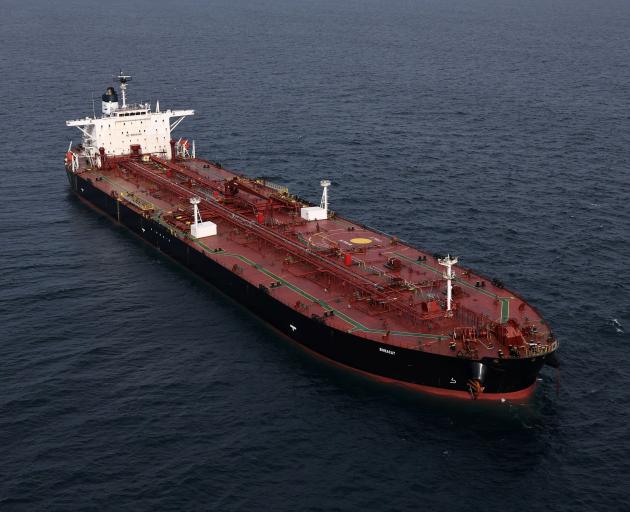
Each ship had to declare the value of its cargo — and if the Danes thought they were understating it, Denmark had the right to buy the entire cargo at the declared value.

They were quite cross when unidentified drones forced them to shut down their airports on several occasions late last month, and Prime Minister Mette Frederiksen said Russian involvement could not be ruled out.
She was being diplomatic. That was the week when Russian drones also violated Polish and Romanian airspace.
Frederiksen had good reason to suspect that the drones harassing Denmark were coming from a Russian-chartered ship off the Danish coast, so she or one of her aides came up with a devastating response.
This week Royal Danish Navy ships began stopping and checking ships in the Oresund strait.
Not just any ships. Old oil tankers flying flags of convenience from low-rent countries that are heading for the North Sea and thence into the open Atlantic.
Ships that belong to the "shadow fleet" transporting sanctioned Russian oil to India, China and other Asian countries.
Fossil fuel sales account for between 30% and 50% of the Russian government’s budget revenue. Two-thirds of the country’s gas and oil is exported, and most of the exports used to go to Europe — until Russia invaded Ukraine in 2022.
International sanctions then stopped most European sales, but Russia cut its prices and found new markets in China and India.
The problem was that while there were lots of pipelines connecting Russia and Europe, there were no oil pipelines and only one gas pipeline between the oilfields of northwest Russia and the new customers in Asia.
Almost all of Russia’s fossil fuel exports now had to go by sea — 14,000 nautical miles from, say, Kaliningrad in the eastern Baltic to Qingdao in China.
To make matters worse, the sanctions regime makes it hard for Russia to charter ships from legitimate shipping companies and buy insurance for them. Instead, it has built a "shadow fleet" of almost a thousand elderly oil tankers (average age about 20 years) most of which would otherwise be on their way to the ship-breakers’ yards.
Their flags may change weekly, as may their names.
Their insurance cover, if any, is dodgy, and their documents certainly do not say that they are carrying Russian oil.
Their crews are multinational, with few or no Russians. Some transfer oil to other ships in the mid-Atlantic; others go the full distance in the same ship.
It’s a more expensive way of doing business and there are more accidents, but until recently Russian oil and gas exports were holding up fairly well.
Oil income was down because Russian sales are heavily discounted, but there was enough money coming in to pay for the war and still keep the civilians contented (or at least quiet).
But now Denmark is stopping some of these shadow ships in the strait and boarding them.
"These old ships pose a particular risk to our marine environment. That’s why we are tightening controls with very basic environmental rules," explained Environment Minister Magnus Heunicke, but it is really a legal excuse to stop them and get on board.
Then the Danish inspectors can examine the fake documents, discover safety issues, note the absent or inadequate insurance, and delay the ships or even detain them.
Denmark only has so many inspectors so not every ship of the shadow fleet is being stopped yet, but the number will grow. Trump’s new sanctions on Russia’s two biggest oil companies will help a bit, too.
And in just a little while the big oil terminals in Russia that pump the oil on to the ghost ships will be coming under direct attack.
Ukraine does not have to wait for Donald Trump to sell it Tomahawk missiles (indirectly, through Nato).
Its new Flamingo missiles have the range to hit all three of the main terminals: Primorsk, Ust-Luga, and Novorossiysk.
They are less accurate than Tomahawks, but their warheads are twice as big and they are coming into high-volume production so they can overwhelm Russian air defences with swarm tactics.
Ukrainian strikes on refineries and pipelines are already causing fuel shortages in Russia, but these new approaches will actually damage the whole economy.
No single new weapon or tactic can decide the outcome of a war of attrition, but the odds are moving in Ukraine’s favour.
— Gwynne Dyer is an independent London journalist.











